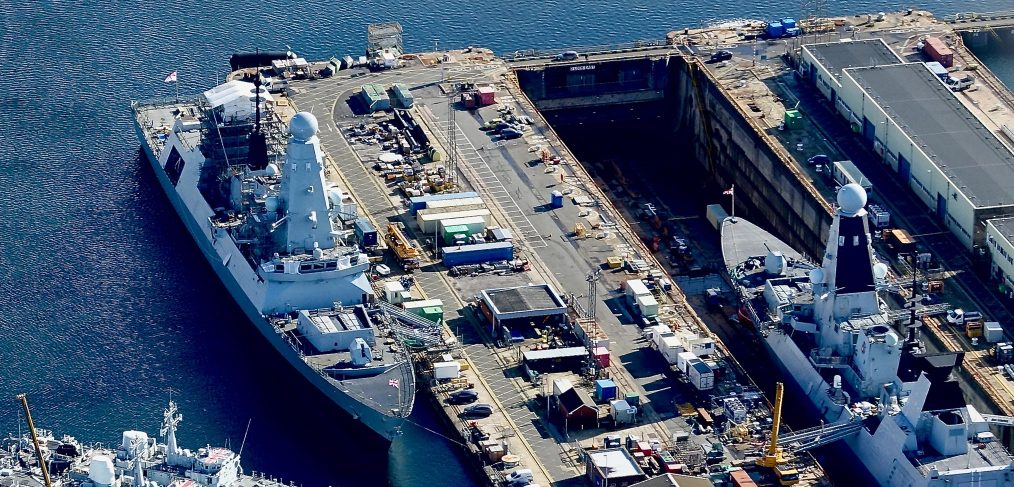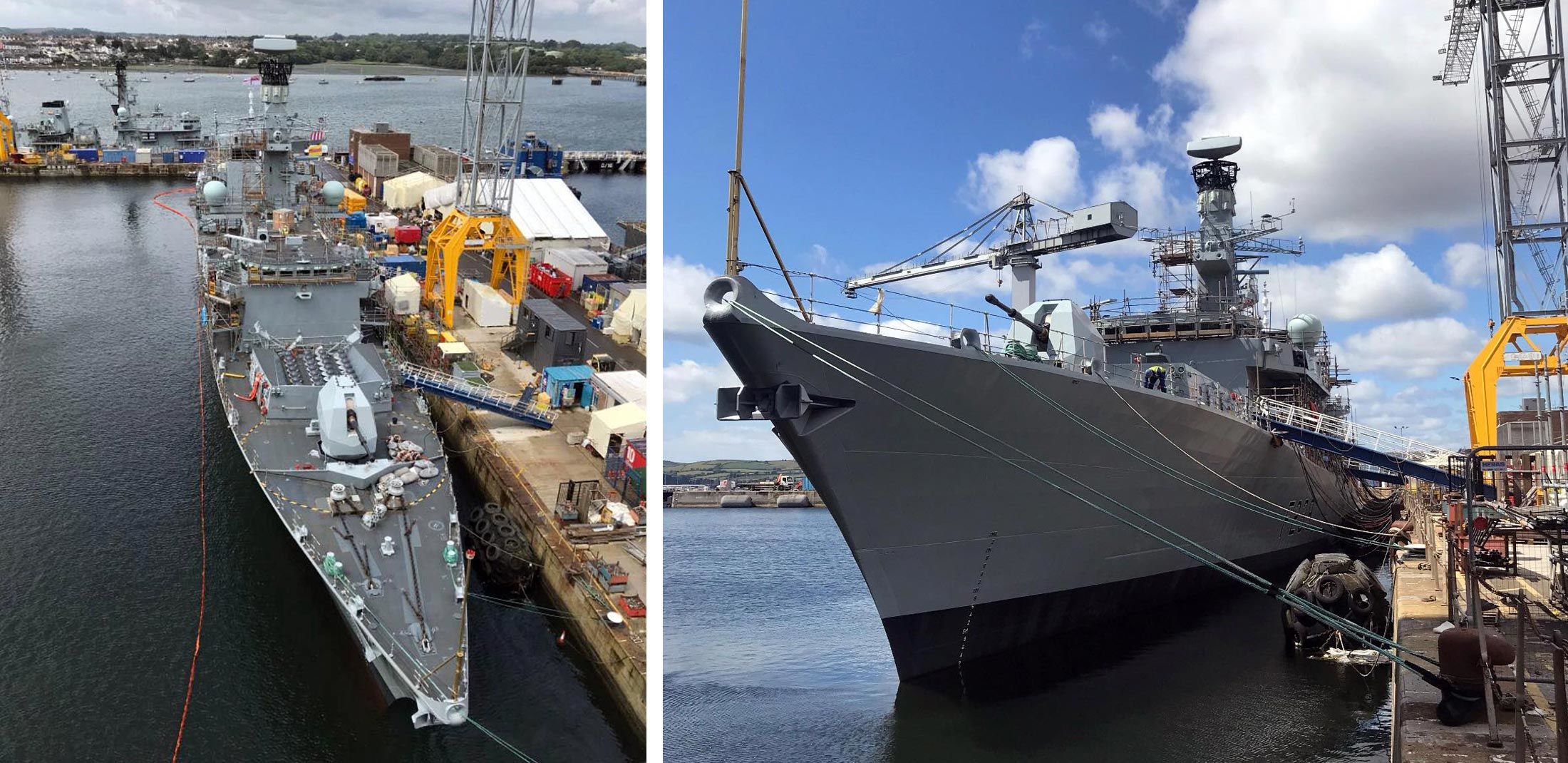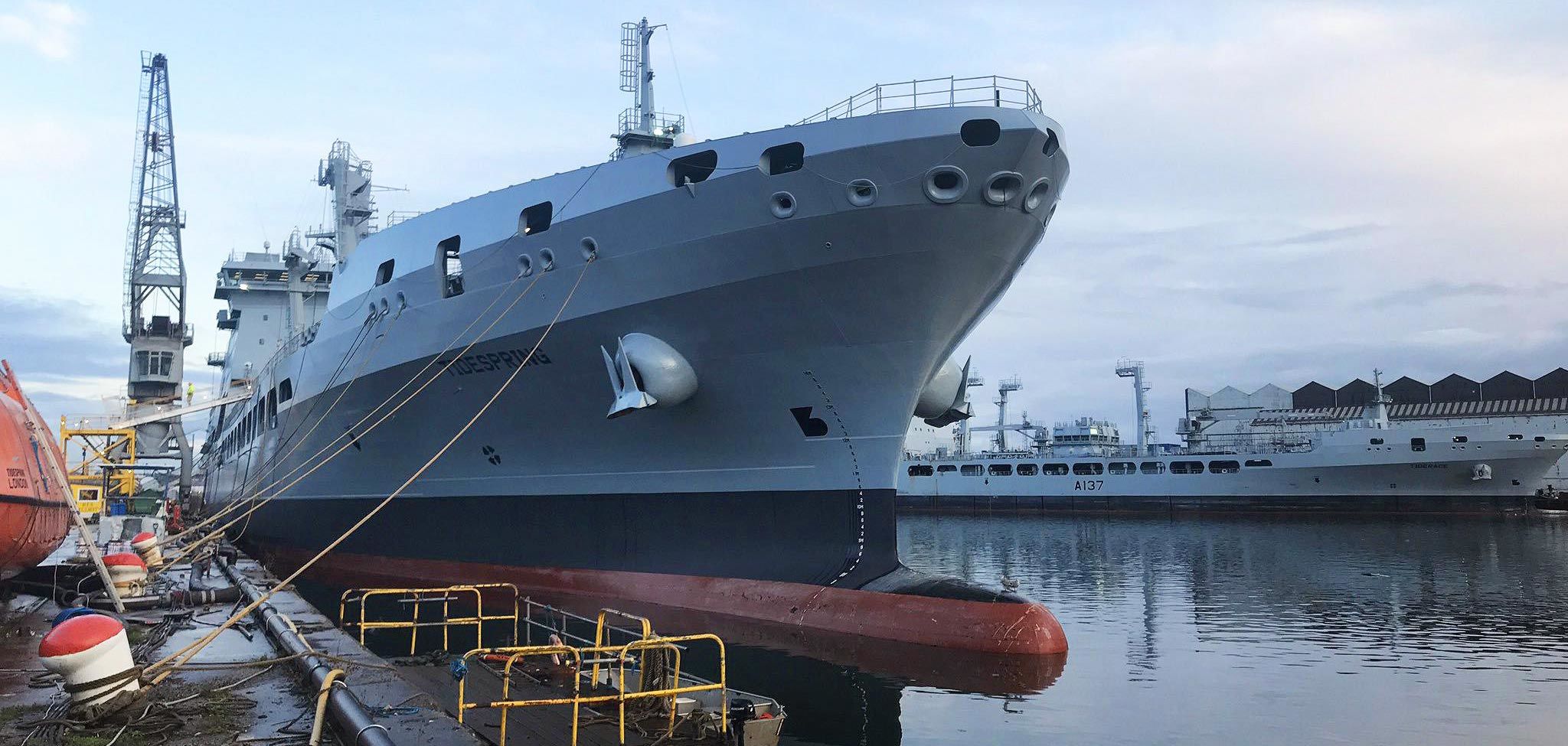Article published with permission of Save the Royal Navy, a website dedicated to preserving the strength of the RN.

The delivery of the RN’s second aircraft carrier has deservedly been celebrated as a great success for British industry but behind the scenes, in the naval bases and shipyards, all is not well. 2019 has seen a number of important maintenance projects stalled or delayed. Here we summarise the situation.
Delays to naval construction and refit work are nothing new. A couple of projects behind schedule would not be especially remarkable but the news that the Type 45 destroyer engine upgrade has been postponed means the number of RN upkeep and construction projects suffering significant delays has now reached at least six.(1) The Power Improvement Project (PIP) project is a £160M contract which was awarded to BAE Systems in March 2018 and will eventually cure the propulsion problems of all six Type 45 destroyers. (The MoD and Defence Minister, Geoff Hoon, not BAES took the decision to risk selecting the unproven WR-21 Gas Turbines back in 2000 that is at the root of the propulsion issues.) Cammell Laird has been sub-contracted by BAES to do the heavy engineering work required to remove the destroyer’s two diesel generators and replace them with 3 more powerful units. CL was expecting the first ship, HMS Dauntless, to arrive on Merseyside to begin the work in this Autumn but the start of the work has now been postponed at least six months, until late March 2020.
BAES say they are not at liberty to comment and the MoD would not offer us any explanation other than to promise “The first of class PIP conversion is expected to complete in 2021 as planned”. To put this in context, HMS Dauntless was reputed to have experienced the worst of the propulsion problems suffered by the class. After serving for just 6 years she was laid up in early 2016, ostensibly to save manpower, and then started a lengthy major refit in Portsmouth in early 2018 which included preparation for the PIP. Delays to this preparatory work are the reason she will not be towed north before the Spring. If the re-engine project proceeds smoothly once underway, we might expect Dauntless to rejoin the fleet at the end of 2021 after nearly six years of unavailability. There will likely be a knock-on effect for the other 5 ships than need to undergo the PIP, although the MoD says the timing of the work will be “dependent on the availability of ships to undertake the conversion, balanced against the Royal Navy’s standing and future operational commitments”.
HMS Daring remains laid up and inactive but other Type 45s, HMS Defender, Duncan and Dragon have participated in very successful deployments across the globe during 2019.(2) As we reported in more detail earlier in the year, HMS Vanguard will not be ready for sea early in 2020 as originally scheduled. As of December 2019, she remains in dry dock at Devonport, shrouded in scaffolding with the Reactor Access House (RAH) still in place over her reactor compartment indicating the refuelling process is still incomplete. As a consequence, there will be inevitable adjustments to the planned maintenance schedules and routine of the other 3 boats. HMS Victorious is the next boat due to have her LOP and may have to conduct additional patrol(s) while really in need a major refit.
(3) Entry into service of the 4th Astute-class submarine, HMS Audacious has been delayed by 17 months putting further pressure on the RN’s vitally important SSN force. The problems are of a serious technical nature and will impact on the delivery of the following 3 boats. This is a new construction rather than an upkeep issue but no explanation or justification for this serious setback has been made public. Those accountable are conveniently shielded by the veil of secrecy around the submarine enterprise.

(4) The major Life Extension (LIFEX) programme for the Type 23 frigates is also running well behind schedule. Currently, 7 frigates, more than half of the force, are in Devonport either undergoing work or in the queue awaiting refit. The failure to replace the Type 23s sooner will have ever-increasing cost implications. Examination of some of the older ships has revealed serious structural problems that require additional rectification and expense. For example, HMS Lancaster required 200 separate steel inserts in her hull to make her seaworthy and HMS Iron Duke is known to have arrived in an even poorer material state.
HMS Richmond is the first frigate to receive a new generation of diesel generators and a fully-modernised control and surveillance system under the PGMU project. Richmond’s ships company moved on board in July but she has still not left the basin, although there are indications she might finally sail on sea trials just before Christmas. As one of the two oldest frigates, HMS Lancaster is not receiving the engine upgrade but has almost completed her LIFEX and should return to her homeport of Portsmouth in December.(5) RFA Tidespring also remains at Cammell Laird after her planned “4-month” Lloyds certification hull inspection and “minor maintenance package” which began in February has now gone beyond 10 months. Neither the contractor or the MoD will offer any explanation, although it is known that the inspections have uncovered unforeseen issues while CL are having to understand an entirely new class of vessel. RFA Tidespring received her Phalanx CIWS mounts in September but it is unknown when she will finally leave the yard. RFA Tiderace arrived in early August for her initial inspections, it is unclear what impacts the delays to the first ship will have on the maintenance schedules of the other three vessels. It should be noted that RFA Tidesurge and RFA Tideforce have recently completed successful deployments in the North Atlantic.

(6) RFA Fort Victoria completed a major refit in October 2018 including modifications to allow her to replenish the QEC aircraft carriers. But in July 2019 she returned to Cammell Laird apparently for “routine underwater hull and propulsion shaft surveys.” While it is hard to understand why this was not done during her major refit, what is more curious is that she remains in dry dock nearly 6 months later. The RN can get by without her services for now and the priority must be her availability to support the first operational deployment of HMS Queen Elizabeth in 2021. Until the new Fleet Solid Support ships are built, Fort Victoria is the only vessel equipped to transfer solid stores (up to 2 tonnes) to the aircraft carriers by jackstay rig.
In all of the instances above it is not clear if technical problems alone are the underlying reason for delays but there is speculation that funding and personnel have also become a factor. The demands of equipping the aircraft carriers maybe gouging the RN’s support budget. The postponement of Dauntless’ PIP until Spring suggests that the project might have been suspended pending the start of the next financial year. When the aircraft carriers sailed from Rosyth, neither was a finished ship and both require maintenance and a substantial and ongoing programme of ‘capability insertion periods’ to complete them. Supporting the carriers makes considerable demands on contractors and their subcontractors, who have finite numbers of skilled personnel to carry out complex engineering tasks. Unless the situation is gripped quickly, these issues threaten to further erode the availability of ships for operations.
The Defence Secretary has told the First Sea Lord to make his top priority “getting what we have working”. If the theme of 2019 has been dockyard delays, let us hope the Navy and its contractors are able to report more rapid progress by the end of 2020.
Article and images copyright Save the Royal Navy unless otherwise indicated.

Comments on Maintenance problems for the Royal Navy mount up